Saucer becomes Harrier
The essence of Wibault's saucer was its immense centrifugal compressor, a relatively simple device capable of accelerating very large quantities of air to moderate velocities. What he had done with it was essentially to build a flying engine of high thrust but with many practical problems still to be addressed. Would the cumbersome control system really work? Was such a large engine practical? Would centrifugal stresses tear the huge rotor apart?
It appears that between 1953 and 1956 Wibault concentrated on somewhat more practical iterations of the centrifugal-compressor-based VTOL jet theme. According to at least one source, Wibault tried to interest both the US and French militaries in his ideas without success. By 1956 he had produced a new Gyropter design with a radical difference, and this one marked a fundamental breakthrough in VTOL jet technology.
Wibault took his compressor and stood it on edge, shrank it, placed it in the fuselage of a relatively conventional-looking jet fighter, and linked it to a turboprop engine through a geartrain. Four of these compressors, linked to one engine, would shoot high-speed jets of air downward from the belly of the plane, providing a stable "four-poster" thrust vector acting through the center of gravity of the plane. To fly forward, these columns of air could be rotated to point backwards.
In the summer of 1956 Wibault submitted this proposal to the British Bristol Engines company where its merits were soon recognized. Bristol engineers Gordon Lewis and Sir Stanley Hooker appreciated the advances represented by the concept but were concerned about the weight and complexity of the geartrain compressor drive arrangement. In a VTOL aircraft, thrust is a precious commodity and every kilogram of system weight has to be ruthlessly scrutinized.
 |
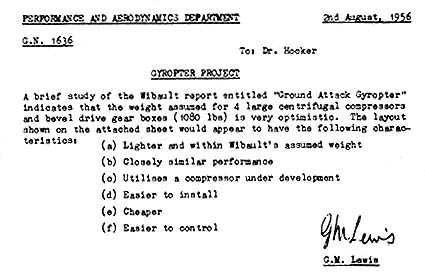 |
See: The Origins of the P.1127 (external site)
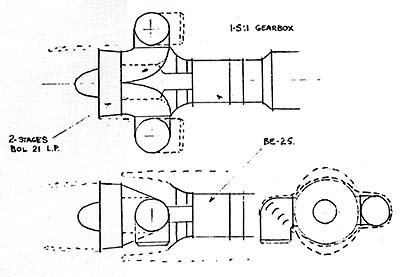
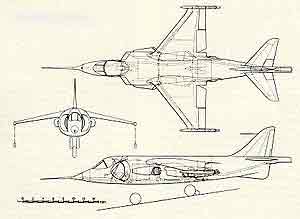 |
Drawing shows the initial Hawker Siddeley design based on the BE-52 engine layout. Since only the fan nozzles pivoted, it was capable of short, but not vertical, takeoff and landing |
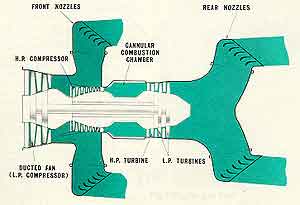 |
The Pegasus engine's four vectoring nozzles allowed the design to evolve quickly into a form that had true VTOL capability. The engine was revolutionary but the airframe was generally conventional. |
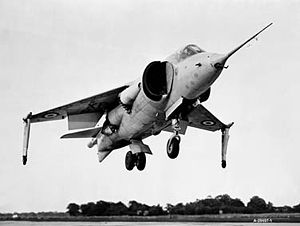 |
By November 1960 the Hawker Siddeley P.1127, the first prototype of what would become the Harrier, was hovering |
Perhaps inadequately recognized, Michel Wibault died in Paris on Jan 23, 1963.